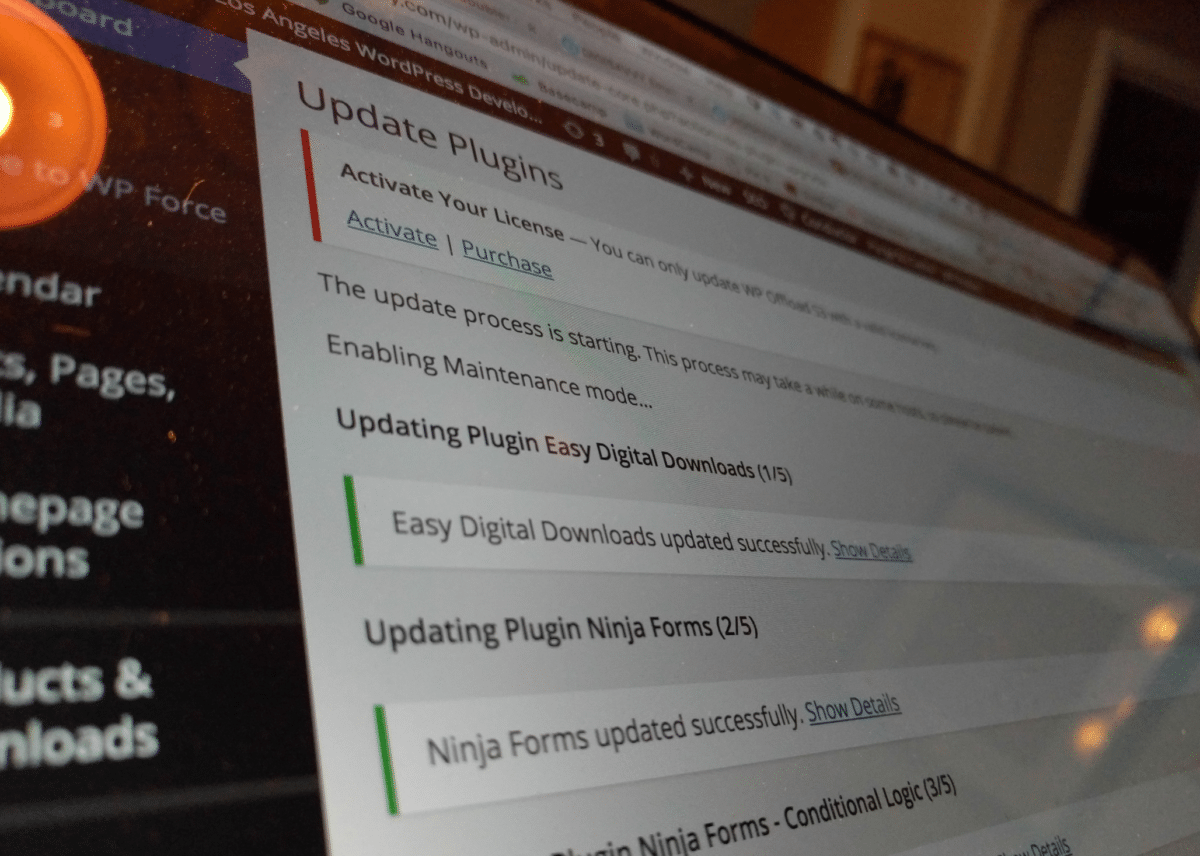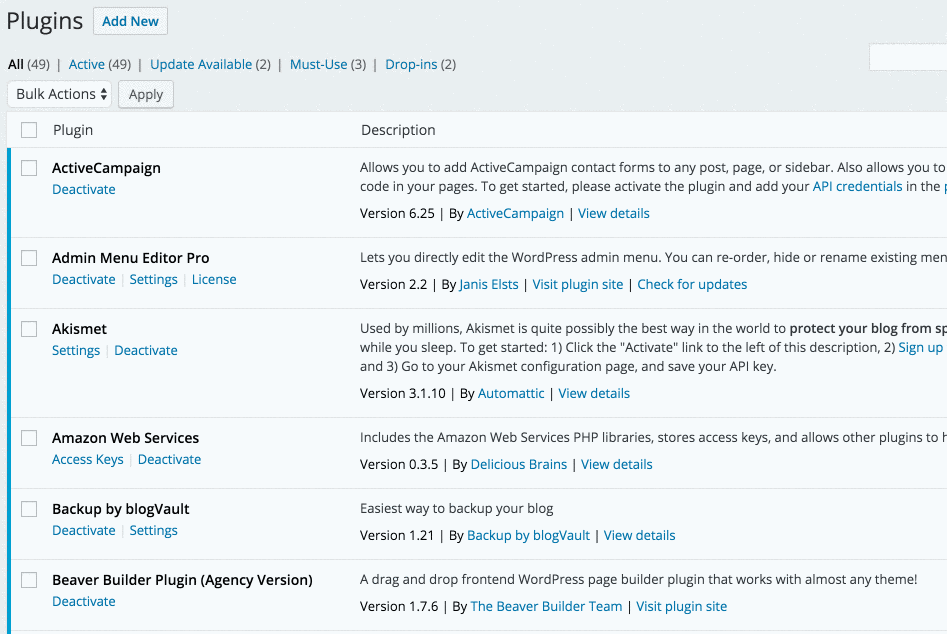Tips For Updating Your WordPress Website

WordPress takes only 5 minutes to install and just a single second to then bring your website down if you run an update that goes awry. Any website responsible for anything to do with your business deserves your special attention and care. That is, think about what you do before you go and do it. Especially with updates! An update can crash your site in a heartbeat. WordPress is easy to use but kinda easy to break, too. Today I’m going to share a few tips to help you stay on the “up and up.”
Man, I hate it when that happens on my staging environment. You did use a staging environment, right? — Joost De Valk
Running updates, as we know, are pretty easy. It’s beautiful and also a bit dangerous! Dangerous how? I’m glad you asked!
Before you run your WordPress updates there are a few points worth considering. First, WordPress is a robust ecosystem. There are a lot of plugins out there and not all of them are built equally. Meaning that some plugins are not built with best-practices in mind and when a WP update hits your site could go down. How do you know if a plugin is well-built? Unless you know how to read the code and know WordPress core coding conventions that will be hard to ascertain. Although, it’s worth stating that even seasoned developers would have a hard time knowing if a plugin is up-to-snuff.
Things to consider before updating:
- Do you have good backups?
- Do you have a backup that can be restored?
- Plugin compatibility and reliability
- Staging site for testing updates
Backups and Restores
Running backups should be a given. Many hosts provide this service and do it automatically for you. So be sure to ask your host if they do this or not. If you want to configure your own backups. You’d do well with BlogVault or BackupBuddy. BlogVault is a service that backs your site up on a daily schedule and keeps a remote copy of your site backup that you can download or migrate elsewhere. It’s super simple.
Even more important than a good backup is a good restore. A Backup is only as good as its restore. Basically, it doesn’t matter if you have a backup if you can’t restore it. When I worked in Enterprise I.T. we had to test the restore capabilities of our backup systems quarterly, as defined by Sarbanes-Oxley regulations—it was for a publically traded insurance firm. I think this sort of test should be done by every website owner as well. Test your restores, people!
About plugins and plugin reliability
When was the last time your plugins were actually updated? This matters. Out of date plugins run a higher risk of being incompatible with newer releases of WordPress. Some functions get deprecated and even removed. Older plugins may rely on some of that functionality and when it’s removed can cause breakage. Fortunately, this is easy to check. If you go to Plugins > Installed Plugins you can click “view details” to see when a plugin was last updated. A plugin updated within the last few months usually means it’s safe. But that’s not always the case. Have a look at the animated gif below.

There’s no concrete answer here, though. It just sorta depends.
A good practice is to update your plugins one plugin at a time. We do this because it is ultimately safer. Also, you’re more likely to know right away which plugin is causing you grief and then go from there.
Testing your updates
You have a staging site that you test your updates on first, right? No? For shame! Many web hosts today, such as SiteGround, WP Engine, and Pantheon have staging environments as part of their service. Although, a newer service called WP Stagecoach came out around a year ago. They offer staging sites for this very thing!
Once you have a staging copy of your production site go through, run your updates on staging, and then run through your tests.
Speaking of which, testing is an often overlooked subject. You should have a test plan drawn up for how to go about testing your website after an update has been applied. A good service for this, who I recommend, is Testlodge.
Testing your updates in a staging environment allows you to potentially see if there’s a problem with your updates ahead of time and allows you to catch errors before they ever hit production!
Wrapping it all up
While WordPress updates are plenty easy to run, it’s also plenty easy to blow up your site. So before you go updating things it’s better you run through some checks before you do can save you potentially lost time and prevent headaches.
Get Notified When We Publish New Content!
Join more than 2,500 people who get our marketing automation, business marketing, and WordPress news!






Good advice – especially the staging server tip!
My favorite way to update is good ol’ WP-CLI.
(fewer clickety-clicks)
wp db export
wp core update
wp theme update twentyfifteen
wp plugin update hello akismet my-amazing-carousel
That’s a pro tip, good sir! I do love me some WP CLI. I should do a post on that. =)